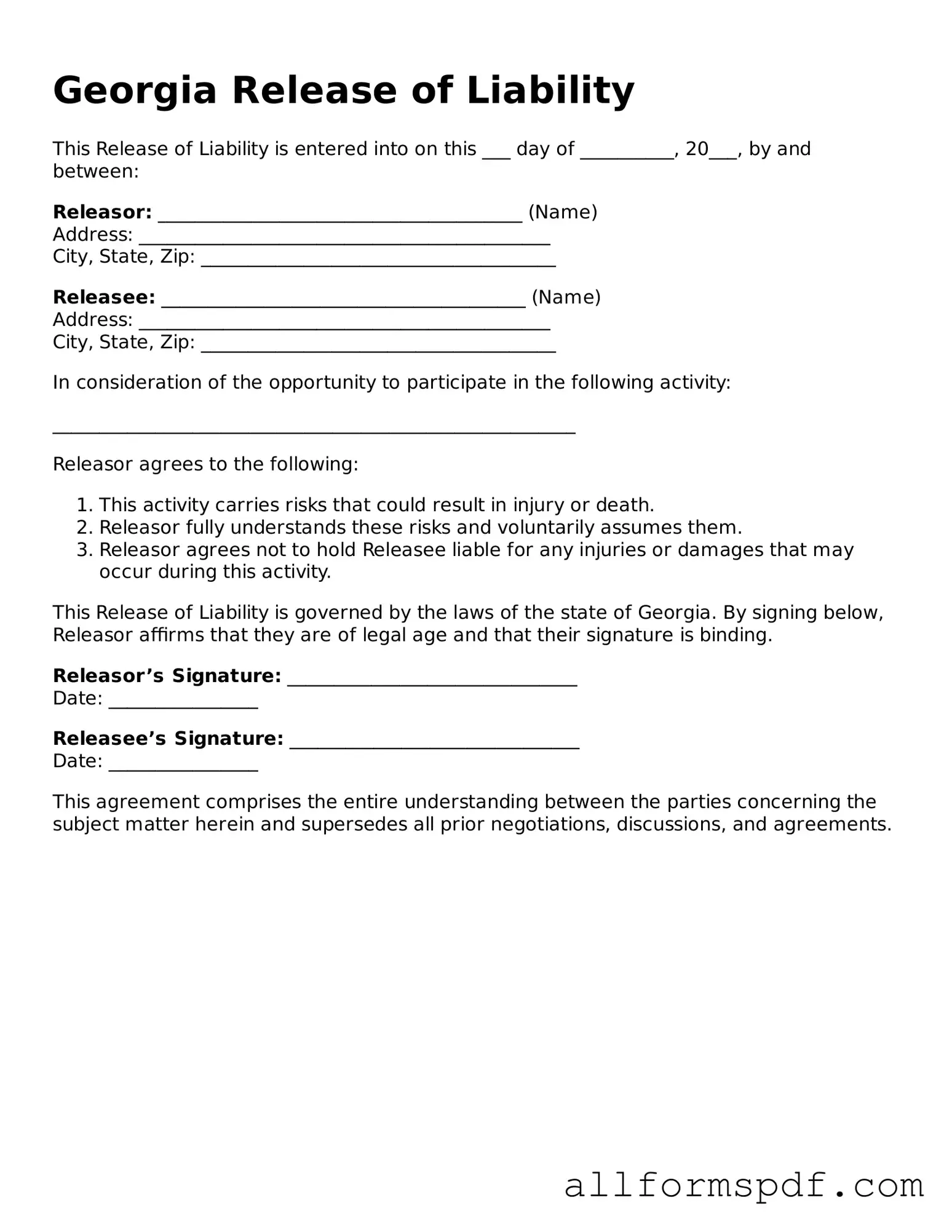Filling out a Release of Liability form in Georgia can seem straightforward, but many individuals make common mistakes that could lead to complications later on. Understanding these pitfalls can help ensure that the form is completed accurately and effectively protects your interests.
One frequent mistake is failing to read the entire document before signing. Many people skim through the form, assuming they understand its implications. However, every clause is important. Not fully grasping the terms can lead to unintended consequences, including waiving rights you did not intend to relinquish.
Another common error is not providing complete information. When filling out personal details, such as names, addresses, and contact information, it’s crucial to be thorough. Incomplete information can create confusion and may invalidate the form if it needs to be referenced later.
People often overlook the necessity of including the date when signing the form. The date is essential for establishing when the agreement was made. Without it, there may be disputes about the timeline of events, which can complicate any claims or liabilities that arise afterward.
Additionally, some individuals mistakenly believe that initialing or signing in one spot is sufficient. It's important to follow the instructions carefully and ensure that all required areas are properly filled out. Missing a signature or initial can render the form ineffective.
Another mistake is not understanding the scope of the release. The form typically outlines specific activities or risks that are being waived. Failing to recognize the extent of what you are agreeing to can lead to liability issues later. It’s wise to clarify any terms that are unclear.
People sometimes forget to consider the implications of the release for their dependents or family members. If you are signing on behalf of others, such as children, it’s essential to understand how the release affects their rights. This oversight can create challenges if a claim arises.
Many individuals also neglect to keep a copy of the signed form. After the form is completed, it’s vital to retain a copy for your records. Having this document on hand can be crucial if any disputes arise or if you need to reference the agreement in the future.
Finally, not consulting with a legal professional can be a significant misstep. While it may seem unnecessary, seeking advice can provide clarity on the document's implications. A professional can help ensure that you are fully aware of your rights and responsibilities under the agreement.
